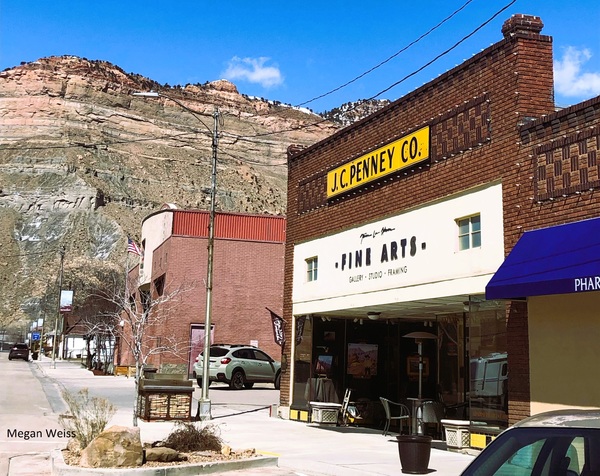Dublin Core
Title
Description
In the early twentieth century, the small community of Helper was mainly a service stop for the railroad. The discovery of coal in nearby mountains led to an explosion in population – growth that is still visible in the town’s historic Commercial District. But these buildings along Main Street are more than just architectural landmarks -- they also show change and continuity in one rural Utah town.
Beginning in the 1930s, theaters became a staple on Helper’s Main Street. The Bonnie Theater, opened by local mine superintendent William Littlejohn, showed traveling Vaudeville productions. Then there was the Paramount Theater, which appealed specifically to Japanese miners who lived in the area. The Paramount had a pool hall, showed silent Japanese films, and even hosted traditional Kabuki theater groups that traveled through Utah on their way to California. Other buildings that were hubs for immigrant culture and life included Sun Shine Noodles, owned by Wanda Kadoto, which served Japanese food, and Harry Eda's general store, which specialized in selling imported Asian products like incense. Eda's store also converted into a school during the day to instruct the children of Japanese coal miners. Some buildings, like the Liberty Theater owned by the Litizette family, became dance halls at night and even hosted Greek weddings.
There was no single style or construction method as Helper's Main Street expanded. Some buildings were hand-hewn stone, some wood, stucco, and many different types of brick. But change for all these buildings came eventually. The Bonnie Theater building became a bowling alley in 1961. Harry Eda’s store and school closed after Prohibition and became Helper’s first state liquor store. The Denver & Rio Grande Western Railroad converted many of its buildings – including a school house and chapel – into storage areas as Helper’s population decreased and railroad services required more space.
Helper’s unique history is captured in the buildings along its Main Street. The historic commercial district comprises 110 buildings across 40 acres, and is on the National Register of Historic Places because of its significance to local residential and commercial life. Now a source of economic revitalization and tourism, Helper's Main Street is also a source of well-earned town pride.
Creator
Source
_______________
See Terrence W. Epperson, "National Register of Historic Places Inventory – Nomination Form: Helper Commercial District,” February 1978, National Park Service, accessed January 2024; Philip F. Notarianni, “Carbon County,” Utah History Encyclopedia, accessed January 2024.

